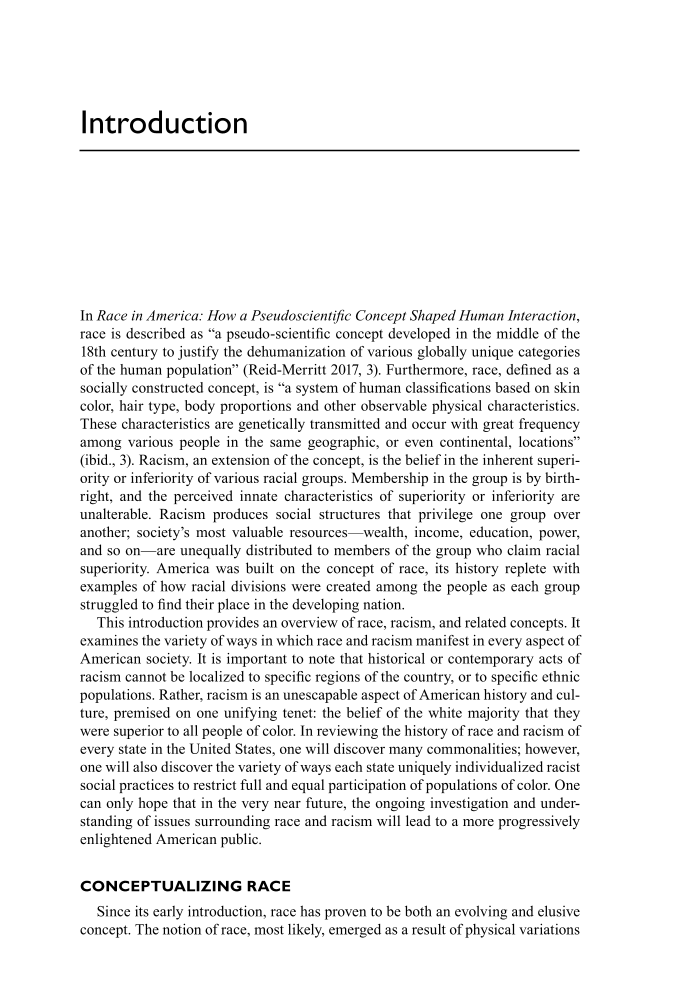Introduction In Race in America: How a Pseudoscientific Concept Shaped Human Interaction, race is described as “a pseudo-scientific concept developed in the middle of the 18th century to justify the dehumanization of various globally unique categories of the human population” (Reid-Merritt 2017, 3). Furthermore, race, defined as a socially constructed concept, is “a system of human classifications based on skin color, hair type, body proportions and other observable physical characteristics. These characteristics are genetically transmitted and occur with great frequency among various people in the same geographic, or even continental, locations” (ibid., 3). Racism, an extension of the concept, is the belief in the inherent superi- ority or inferiority of various racial groups. Membership in the group is by birth- right, and the perceived innate characteristics of superiority or inferiority are unalterable. Racism produces social structures that privilege one group over another society’s most valuable resources—wealth, income, education, power, and so on—are unequally distributed to members of the group who claim racial superiority. America was built on the concept of race, its history replete with examples of how racial divisions were created among the people as each group struggled to fi nd their place in the developing nation. This introduction provides an overview of race, racism, and related concepts. It examines the variety of ways in which race and racism manifest in every aspect of American society. It is important to note that historical or contemporary acts of racism cannot be localized to specific regions of the country, or to specific ethnic populations. Rather, racism is an unescapable aspect of American history and cul- ture, premised on one unifying tenet: the belief of the white majority that they were superior to all people of color. In reviewing the history of race and racism of every state in the United States, one will discover many commonalities however, one will also discover the variety of ways each state uniquely individualized racist social practices to restrict full and equal participation of populations of color. One can only hope that in the very near future, the ongoing investigation and under- standing of issues surrounding race and racism will lead to a more progressively enlightened American public. CONCEPTUALIZING RACE Since its early introduction, race has proven to be both an evolving and elusive concept. The notion of race, most likely, emerged as a result of physical variations
Document Details My Account Print multiple pages
Print
You have printed 0 times in the last 24 hours.
Your print count will reset on at .
You may print 0 more time(s) before then.
You may print a maximum of 0 pages at a time.





























































































































































































































































































































































































































































































































































































































































































































































































































































































































































































































































































































































